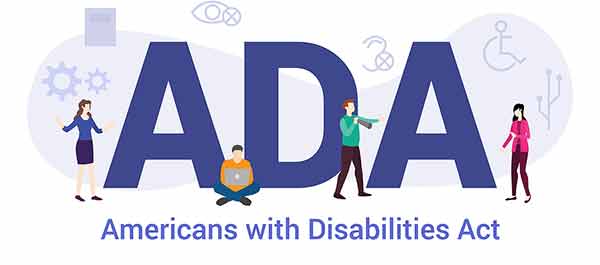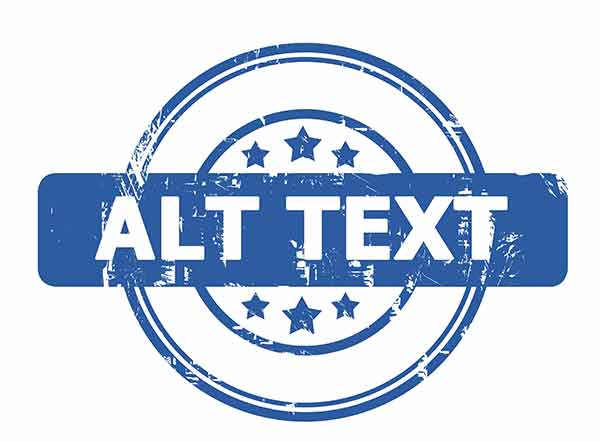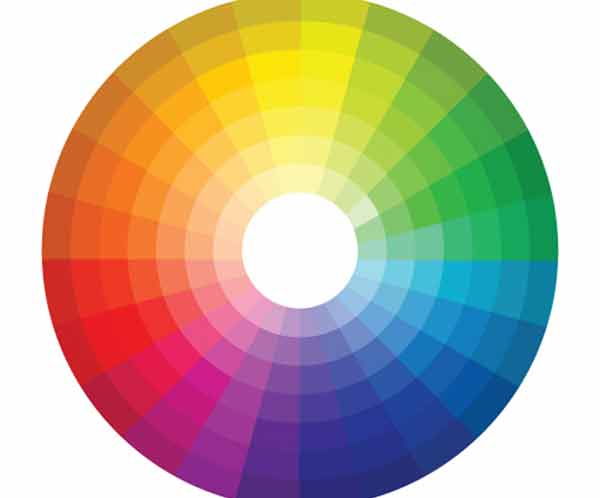This article is a continuation from School Website Photography, Part 1, which was to help you capture, curate, and use real school website photos to advance enrollment, retention, and community pride—without pro gear or a pro budget. The goal of part 2 is to keep the compelling images you created in Part 1 ADA compliant, legal, accessible, fast, and trustworthy—so they serve all families and keep you clear of complaints.
So, jump into Part 2 below!

9 Accessibility Is Now Federal Law (ADA Title II 2024 Rule)
In April 2024, the U.S. Department of Justice finalized a rule requiring state and local governments—including public schools and districts—to make web content and mobile apps conform to WCAG 2.1 Level AA (with limited exceptions). Larger entities (50k+ population) must comply by April 24, 2026; smaller entities and most special districts have until April 26, 2027. These deadlines make accessible, ADA compliant images a must‑do for any school digital team. ([ADA Web Rule Fact Sheet], [ADA First Steps Guide])
Why it matters: Non‑compliance can trigger Office for Civil Rights complaints, settlement agreements, remediation costs, and loss of community trust—plus it undermines inclusive communication. Following WCAG boosts usability for everyone and strengthens overall school website accessibility.

10 Alt Text in 5 Seconds: The Phone Test
Imagine calling a friend and describing a photo before your elevator dings. Whatever you’d say in that moment is solid alt text. Keep it short (roughly 1–2 brief sentences), focus on purpose, and skip “image of”—assistive tech already announces that. ([W3C Alt Decision Tree], [W3C Images Tutorial], [WebAIM Alt Text], [Section508 Alt Text])
Formula (Alt Text for School Photos): Subject + Action + Context/Why it matters.
Example: “Two seniors high‑five after welding a metal sculpture in Career Tech class.”
Link image used as a button? Describe the action: “Download kindergarten supply list.” W3C Alt Decision Tree,
Decorative Images: If the image adds no new info (purely visual flourish), use an empty alt attribute (alt="") so screen readers skip it. W3C Images Tutorial,
Complex Images: Graphs, maps, infographics need a short alt + a longer text equivalent on the page or linked description. (W3C Images Tutorial)

11 Color Contrast & Text Overlays
Low‑contrast text over photos = instant usability fail for low‑vision and mobile users in sunlight. WCAG requires 4.5:1 contrast for normal text and 3:1 for large text (18pt+ or 14pt bold). Test with free tools: WebAIM Contrast Checker and downloadable (TPGi Colour Contrast Analyser, TPGi CCA)
Safer Layout: Place live HTML text in a solid‑color box next to the image; or apply a semi‑opaque overlay behind text to ensure contrast. WebAIM Contrast Checker
12 Motion & Carousels: Pause or Ditch
Auto‑advancing slideshows can be dizzying, hard to read, and often inaccessible to keyboard or screen‑reader users. If you use a carousel, provide visible play/pause controls, ensure keyboard navigation, announce slide changes to assistive technology, and stop auto-scroll after a cycle. (W3C Carousels Tutorial
Conversion Bonus: Many schools see better clicks with a single strong hero image + CTA than with a rotating carousel—test it!

13 Student Privacy, FERPA & Photo Releases
Under FERPA, a student’s photo or video becomes an education record when it is directly related to a student and maintained by the school (e.g., disciplinary use, ID photos, focused portraits). Crowd shots of public events are less likely to qualify unless a particular student is the focus. (FERPA Photos & Videos FAQ)
Download Our FREE eBook: How to Create an Exceptional School Website
Directory Information & FERPA Photo Release
Many schools designate names, grade levels, and activity photos as “directory information” and provide families the chance to opt out of public disclosure each year. Track opt‑outs in your SIS and flag them in your image bank. ([FERPA Photos & Videos FAQ])
Low‑Risk Practices
- Collect media-release consent at registration (separate checkboxes for website, social media, and print).
- Use sticker codes, wristbands, or roster highlights for no‑photo students at events.
- Crop group shots to exclude opt‑out students before publishing.
- Strip or suppress GPS location metadata prior to sharing (see Apple Photos Metadata Guide; Google Photos Location Privacy; Google Camera Location Settings).

14 Copyright 101 for K‑12 Websites (Updated 2025)
Copyright attaches the moment a photo is created—no © symbol required. If you (or your employee within scope of work) took the photo, your school owns it. Outside photographers own their work unless you have a written work‑for‑hire or license agreement—critical when using graduation portraits or yearbook vendor shots on your site.
Licensed Stock: Buy from reputable libraries; download and archive the license terms. Some require attribution—include it in a caption or credits page. ([Creative Commons Licenses])
Creative Commons Basics (Copyright Images Schools Should Understand)
- CC0: No rights reserved; safest for reuse.
- CC‑BY: Credit required; suitable for blogs if you can attribute.
- CC‑BY‑SA: Share‑alike; derivatives must carry same license—can complicate branded materials.
- CC‑BY‑NC: Non‑Commercial—avoid for school marketing sites, which promote enrollment. ([Creative Commons Licenses])
“Found on Google” ≠ Free to Use: Indexed images may still be fully copyrighted; misuse risks costly demand letters.
15 AI‑Generated School Photos—Friend or Legal Minefield?
The U.S. Copyright Office’s multi‑part Copyright & AI study (Part 2 released Jan 29 2025) reaffirms that copyright protects human authorship. Purely machine‑generated images lack protection; human‑directed works may qualify when meaningful human creativity is evident (selection, arrangement, edits). ([USCO AI & Copyright Hub], [USCO AI Report News Release])
Practical Implications for Schools
- You usually can’t stop others from reusing a fully automated AI image you publish (no copyright).
- If you heavily edit, composite, or paint‑over AI output, your human contributions may be protectable—document your steps.
- Avoid prompts “in the style of [living artist]” to sidestep training‑data disputes.
- Use AI for illustrations (concepts, mascots, abstract diversity graphics); rely on real photos for actual students to preserve trust.
- Caption transparently: “Illustration generated with [Tool]; not a photo of actual students.”
16 AI Image Accessibility & Alt Text
Treat AI art like any other image: describe what users need to know, not how it was made. Use the same Subject‑Action‑Context formula; mark purely decorative illustrations with empty alt. For complex conceptual art, include a short caption plus longer description nearby.
17 Performance: Optimize & Serve Fast
Large, unoptimized photos slow pages—especially for families on mobile data. Best practice: serve the smallest image that still looks good at each display size. Convert to modern formats (WebP, AVIF when supported), compress intelligently, and lazy‑load images below the fold. ([web.dev Image Performance])
Sizing Cheat Starts
- Full‑width hero (desktop): ~2400px wide; quality 70–80%.
- Content inline: 1200px or less.
- Thumbs/cards: 400–600px.
Adjust for your theme; test retina displays withsrcsetdensities. ([MDN Responsive Images])
18 File Naming & SEO Perks
Search engines read filenames and alt text. Descriptive, hyphenated names (e.g., science-fair-winner-2025.jpg) reinforce relevance and can surface your school in image search results—bringing new families to your site. Pair with concise alt text that includes natural keywords (not spam).
19 Pre‑Publication Checklist
Before you click Publish, run through the School Website Photo Checklist (download below). Highlights:
- Alt text written / decorative marked
- Contrast confirmed
- No auto‑advancing motion (or controls added)
- FERPA release OK
- GPS metadata stripped
- Licensed / attribution logged
- AI disclosure added (if applicable)
- File size optimized
Tools to help: WAVE Accessibility Checker; WebAIM Contrast Checker.
20 Templates & Downloadables
Use or adapt these copy‑and‑paste helpers:
Parent/Guardian Media‑Release Snippet
I give permission for [School/District] to photograph or record my child and to use those images in school‑related publications, the school website, and social media. I understand images may be used without identifying my child by name unless I provide express permission below. (Checkbox options for website, social, print.)
Staff Photo Submission Form Fields
Event • Date • Names/Grades (optional) • Release verified? (Y/N) • Suggested alt text (phone test) • Sensitive info present? (Y/N) • Usage rights (own / district / licensed stock / CC / AI).
School Website Photo Checklist
Download a printable School Website Photo Checklist as a handy reference for adding photos that are compliant to your school website.

21 Final Thoughts & CTAs
Great imagery paired with rock‑solid accessibility isn’t fluff—it’s enrollment strategy, reputation management, and legal risk reduction rolled into one. If you’d like help gathering, curating, optimizing, and posting photos the right way, School Webmasters can manage the whole workflow—or train your staff and student media teams to do it confidently. Let’s make your first impression unforgettable while following school website best practices across design, content, and accessibility. Contact us at 888-750-4556 and ask for Jim Leedy or just request a quote!


